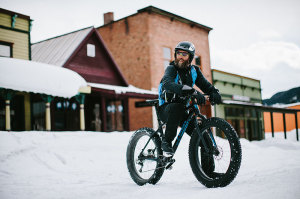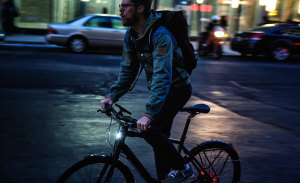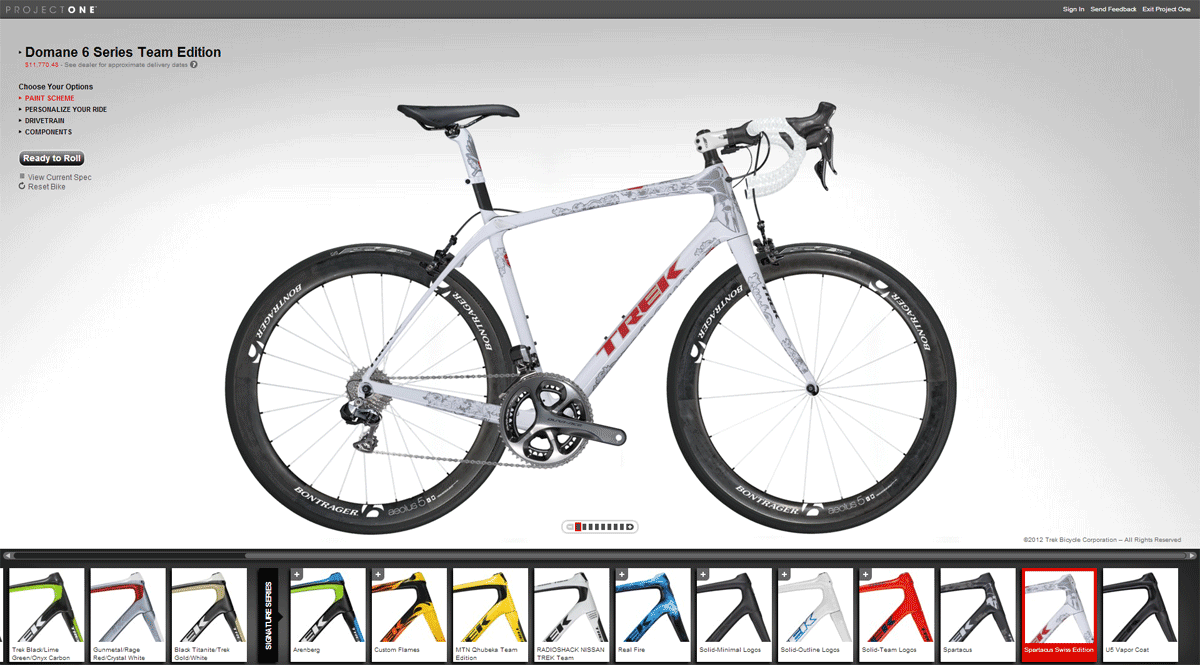The onset of winter means that biking gets more difficult – the cold, wind, and precipitation mean that many give up on biking for the season altogether. In this article, we will review some winter biking tips to keep you warm on your bike, even when it gets frosty and icy. This is not just a comfort issue- you are vulnerable to frostbite due to the cold and wind, and falls are also a concern due to the presence of ice that might be difficult to see. Read on to learn about how to stay warm and safe in the winter.
 Have the Right Bike
Have the Right Bike
The potential for snow and ice to cover the path means that you can’t just use the same bike and tires that you used in the summer. A great winter option is the Trek Farley bike. You need a bike that can accommodate a wide tire. A wider tire is safer, because with more surface area touching the road, it can grip better. This is ideal for the slippery road conditions during the winter. Try to have a bike that can handle tires at least 35 centimeters thick. Having thick, studded tires is a necessity for getting around in the snow, and without the right bike, you won’t be able to use such tires.
Winter Bike Maintenance
Winter weather can be extremely harsh on your bike. Between the salt, snow, ice and normal road grime a lot of stuff will build up on your bike and if not properly cared for will harm it. Make sure to take a few minutes to wipe down the frame of your bike and if needed lubricate it. Adding fenders to your bike will help prevent some of the buildup. Fenders will also keep it from splashing onto you as well. Our Trek certified technicians are more than happy to install these onto your bike for you.
How to Ride
There’s more to winter biking tips than equipment. It’s also important to know what to do in the winter. First of all, avoid using the front brakes when your bike is going over ice. This can lead to slipping and falling, which will be painful and can damage you or your bike. A good general rule during winter riding is to ride slower than you normally would and give yourself more time for braking.
Pay close attention to the weather. Cycles of warm days and cold nights often imply that snow or ice will melt, then refreeze. This new ice might catch you by surprise. Make sure you know if the temperature dropped below freezing recently. It’s also a good idea to be ready to take off and put on layers. A layer of clothes that seem like a good idea at first might become too warm as the day goes on. If you sweat into them, then they will never dry out, and you can’t depend on them to keep you warm later on. It’s better to take them off if you feel too warm.
 Visibility & Safety
Visibility & Safety
Visibility tends to be decreased during the winter and the days are shorter, so make sure your bike is properly equipped with reflectors and lights to ensure drivers and other bikers can spot you. To be extra safe make sure to wear reflective clothing, such as a reflective windbreaker or reflective helmet cover. Both of those items have a double benefit of keeping you warm and visible.
If you’d like to prepare your bike for winter riding and aren’t quite sure where to start our bike experts are happy to help. They’ll walk you through basic bike maintenance and what parts for your bike and products you’ll need to maintain it through the winter. We also have a full service center if you’d prefer to let us take care of preparing your bike for winter.






0 Comment